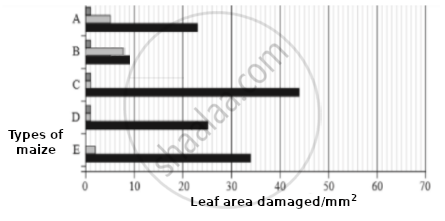Advertisements
Advertisements
प्रश्न
You have identified a useful gene in bacteria. Make a flow chart of the steps that you would follow to transfer this gene to a plant.
उत्तर
After identifying a useful gene in bacteria the following steps should be undertaken
(1) Isolation of useful gene using Restriction Endonucleases
↓
(2) Transferring the gene to a suitable vector to create a recombinant DNA molecule
↓
(3) Transfer of these recombinant DNA molecules to the target cells
↓
(4) Screening of cells for transformation
↓
(5) Selection of transformed cells
↓
(6) Regeneration of plants from the transformed cells to get transgenic plants.
APPEARS IN
संबंधित प्रश्न
How did the process of RNA interference help to control the nematode from infecting the roots of tobacco plants?
List any five possible advantages of a GMO to a farmer.
Answer the following question.
List any four ways by which GMOs have been useful for enhanced crop output.
A person deficient in the rhodopsin should be advised to take more of:
A cell swells up when kept in:
Maize grain is a fruit known as ______.
Bt brinjal is an example of transgenic crops. In this Btrefers to ______.
Gene expression can be controlled with the help of RNA. Explain the method with an example.
What is meant by the term bio-pesticide? Name and explain the mode of action of a popular bio-pesticide.
Insects in the Lepidopteran group lay eggs on maize crops. The larvae on hatching feed on maize leaf and tender cob. In order to arrest the spread of three such Lepidopteran pests, Bt maize crops were introduced in an experimental field.
A study was carried out to see which of the three species of lepidopteran pests was most susceptible to Bt genes and its product.
The lepidopteran pests were allowed to feed on the same Bt-maize crops grown on 5 fields (A-E).
The graph below shows the leaf area damaged by these three pests after feeding on maize leaves for five days.

Key for lepidopteran insect pest species
 |
Species I |
 |
Species II |
 |
Species III |
Insect gut pH was recorded as 10, 8 and 6 respectively for Species I, II and III respectively.
(a) Evaluate the efficacy of the Bt crop on the feeding habits of the three species of stem borer and suggest which species is least susceptible to Bt toxin.
(b) Which species is most susceptible to Bt-maize, and explain why?
(c) Using the given information, suggest why a similar effect was not seen in the three insect species.
